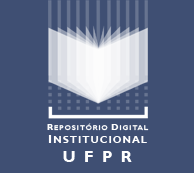EUCALYPTUS RESPONSE TO THE APPLICATION OF LIMESTONE, GYPSUM, AND LIME MUD IN HUMIC CAMBISOL
DOI:
https://doi.org/10.5380/rf.v53i2.86517Palavras-chave:
Sources of calcium, gypsum and Eucalyptus cultivationResumo
Eucalyptus response to limestone, gypsum, and lime mud application in Humic Cambisol. This study aimed to evaluate the development of Eucalyptus dunnii Maiden in Humic Cambisol in the Santa Catarina. Individuals were treated with doses and application forms of dolomitic limestone, gypsum, and lime mud. The experiment was conducted in the field, testing the following treatments: T1 – control; T2 – 3.5 t ha-1 of limestone in total area; T3 – 1.75 t ha-1 of limestone in the planting strip; T4 – 3.5 t ha-1 of limestone in the planting strip; T5 – 3.5 t ha-1 of lime mud in the planting strip; T6 – 3.5 t ha-1 of limestone + 2.75 t ha-1 of gypsum in the planting strip; T7 – 1.75 t ha-1 of limestone in the furrow; T8 – 1.75 t ha-1 of limestone + 1.38 t ha-1 of gypsum in the furrow; T9 – 1.38 t ha-1 of gypsum in the furrow. The treatments were applied in April 2016, six months after the seedlings were planted. In total, four forest inventories were carried out, measuring plant height and diameter, from 2019 to 2022. Soil samples up to a depth of 0.40 meters were collected at 31 and 56 months after application of treatments, determining the relationships Ca/Mg and Mg/K. None of the variables, measured or calculated, of the plants were significantly altered as a function of the treatments. Ca/Mg ratios were higher under lime mud and gypsum, whereas Mg/K ones, under treatments with dolomitic limestone.
Downloads
Publicado
Como Citar
Edição
Seção
Licença
Direitos Autorais para artigos publicados nesta revista são do autor, com direitos de primeira publicação para a revista. Em virtude da aparecerem nesta revista de acesso público, os artigos são de uso gratuito, com atribuições próprias, em aplicações educacionais e não-comerciais.A revista, seguindo a recomendações do movimento Acesso Aberto, proporciona acesso publico a todo o seu conteudo, seguindo o principio de que tornar gratuito o acesso a pesquisas gera um maior intrcambio global de conhecimento.
Conteúdos do periódico licenciados sob uma CC BY-NC-SA 4.0



